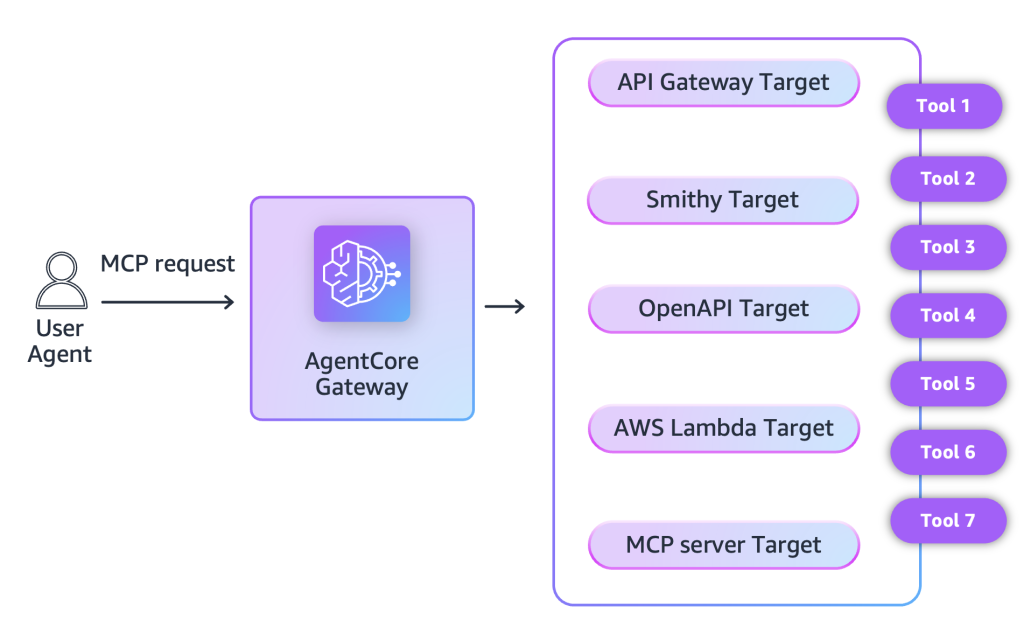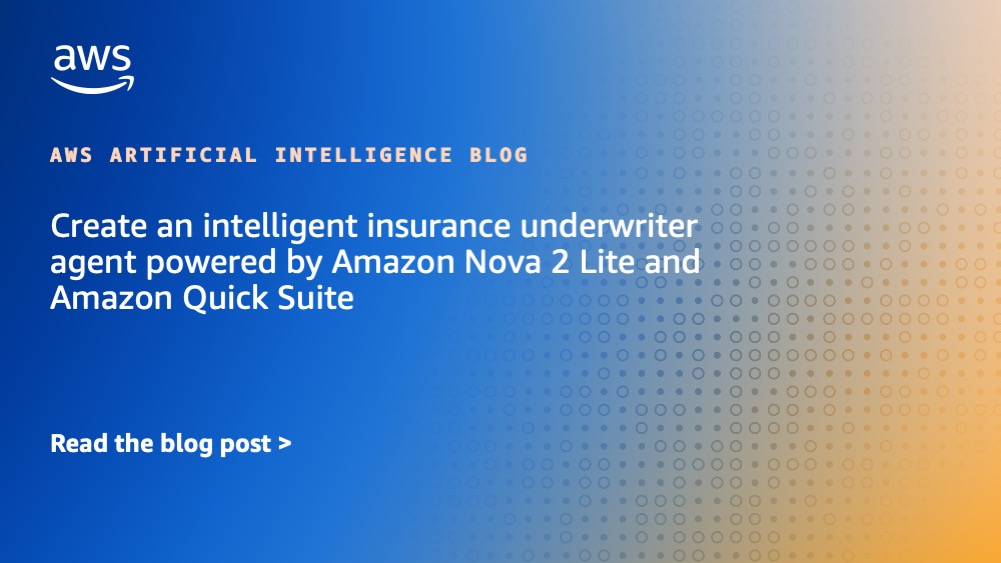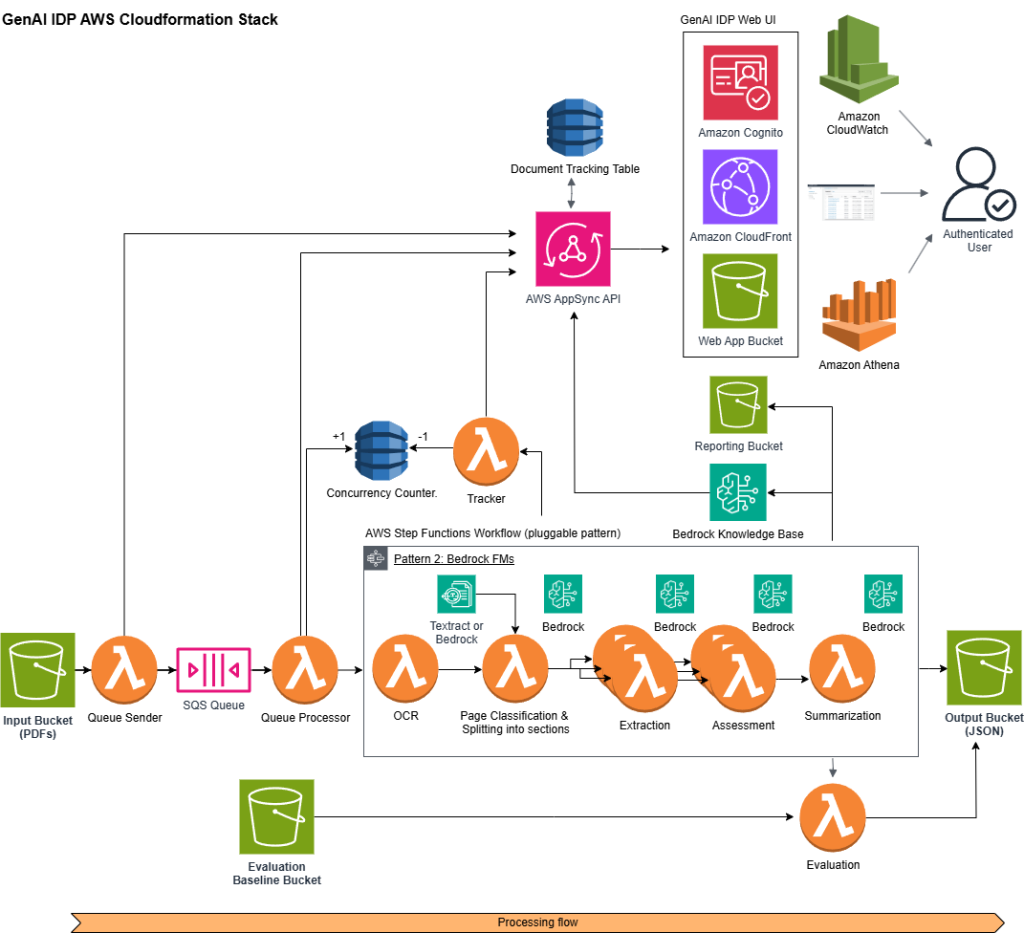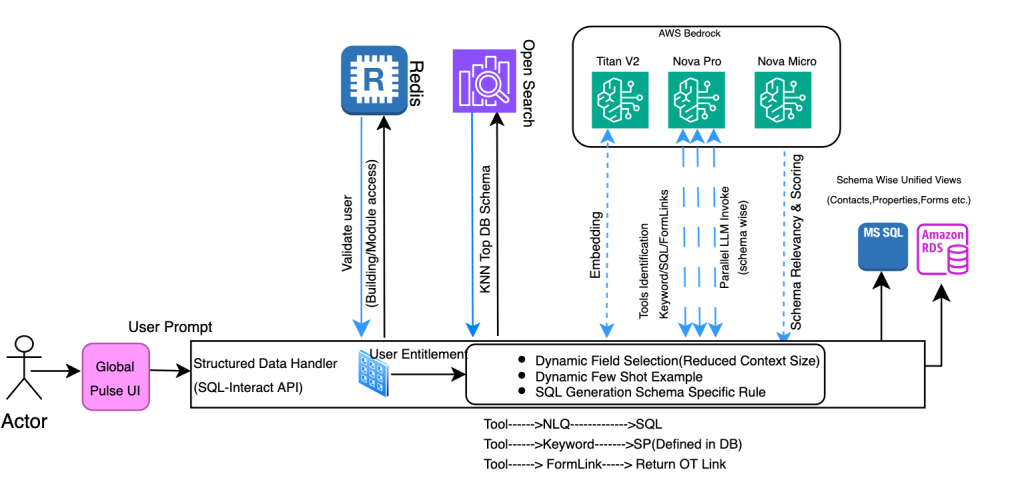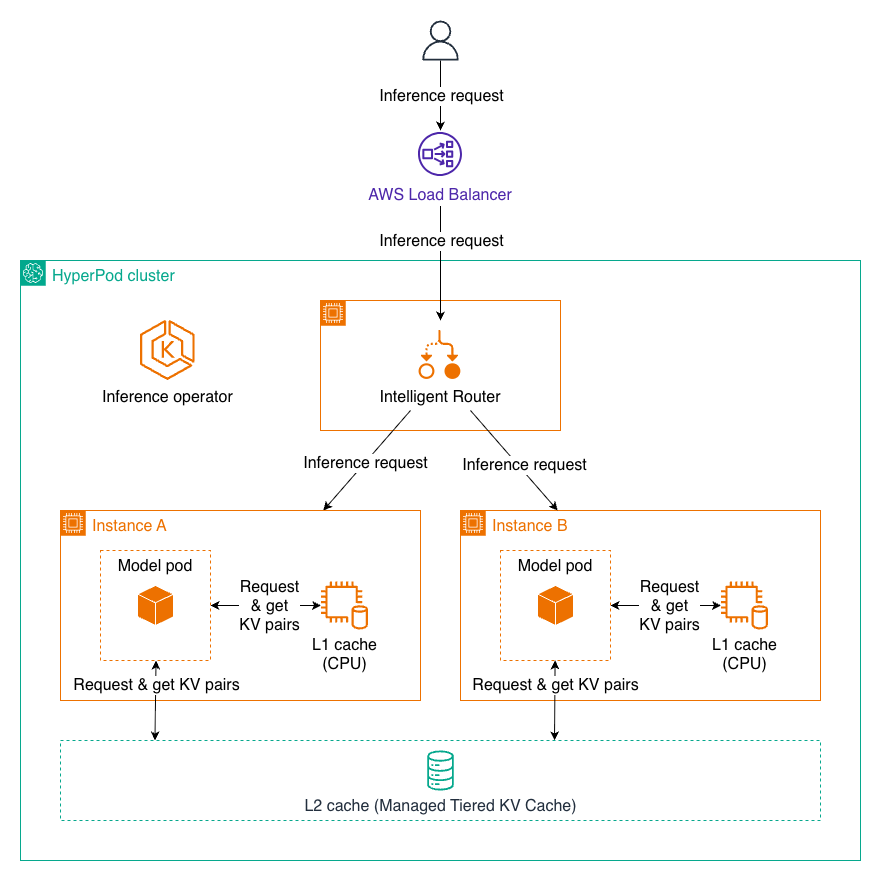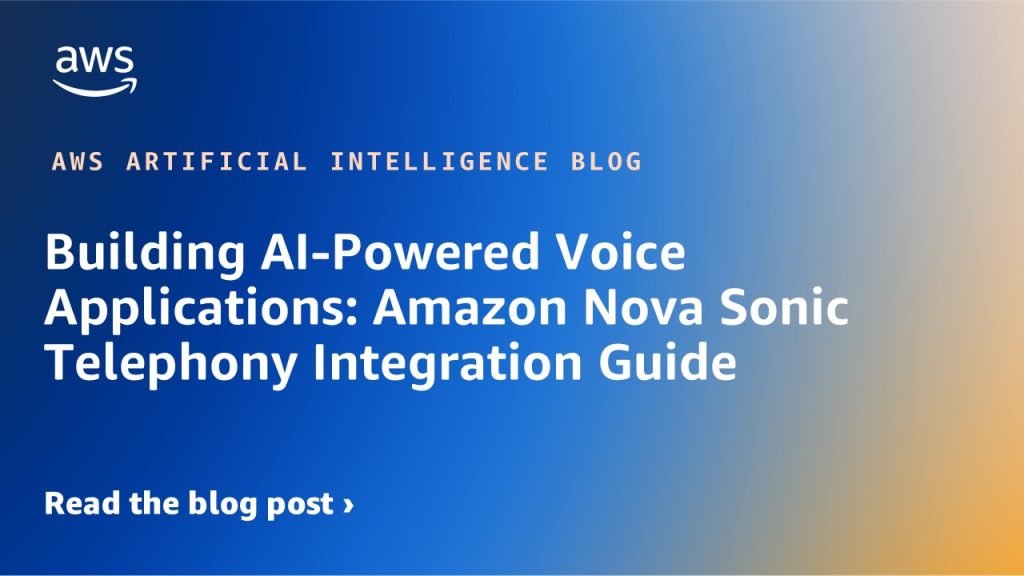Artificial Intelligence
Category: Artificial Intelligence
How AWS delivers generative AI to the public sector in weeks, not years
Experts at the Generative AI Innovation Center share several strategies to help organizations excel with generative AI.
S&P Global Data integration expands Amazon Quick Research capabilities
Today, we are pleased to announce a new integration between Amazon Quick Research and S&P Global. This integration brings both S&P Global Energy news, research, and insights and S&P Global Market Intelligence data to Quick Research customers in one deep research agent. In this post, we explore S&P Global’s data sets and the solution architecture of the integration with Quick Research.
Streamline AI agent tool interactions: Connect API Gateway to AgentCore Gateway with MCP
AgentCore Gateway now supports API Gateway. As organizations explore the possibilities of agentic applications, they continue to navigate challenges of using enterprise data as context in invocation requests to large language models (LLMs) in a manner that is secure and aligned with enterprise policies. This post covers these new capabilities and shows how to implement them.
Create an intelligent insurance underwriter agent powered by Amazon Nova 2 Lite and Amazon Quick Suite
In this post, we demonstrate how to build an intelligent insurance underwriting agent that addresses three critical challenges: unifying siloed data across CRM systems and databases, providing explainable and auditable AI decisions for regulatory compliance, and enabling automated fraud detection with consistent underwriting rules. The solution combines Amazon Nova 2 Lite for transparent risk assessment, Amazon Bedrock AgentCore for managed MCP server infrastructure, and Amazon Quick Suite for natural language interactions—delivering a production-ready system that underwriters can deploy in under 30 minutes .
How Myriad Genetics achieved fast, accurate, and cost-efficient document processing using the AWS open-source Generative AI Intelligent Document Processing Accelerator
In this post, we explore how Myriad Genetics partnered with the AWS Generative AI Innovation Center to transform their healthcare document processing pipeline using Amazon Bedrock and Amazon Nova foundation models, achieving 98% classification accuracy while reducing costs by 77% and processing time by 80%. We detail the technical implementation using AWS’s open-source GenAI Intelligent Document Processing Accelerator, the optimization strategies for document classification and key information extraction, and the measurable business impact on Myriad’s prior authorization workflows.
How CBRE powers unified property management search and digital assistant using Amazon Bedrock
In this post, CBRE and AWS demonstrate how they transformed property management by building a unified search and digital assistant using Amazon Bedrock, enabling professionals to access millions of documents and multiple databases through natural language queries. The solution combines Amazon Nova Pro for SQL generation and Claude Haiku for document interactions, achieving a 67% reduction in processing time while maintaining enterprise-grade security across more than eight million documents.
Managed Tiered KV Cache and Intelligent Routing for Amazon SageMaker HyperPod
In this post, we introduce Managed Tiered KV Cache and Intelligent Routing for Amazon SageMaker HyperPod, new capabilities that can reduce time to first token by up to 40% and lower compute costs by up to 25% for long context prompts and multi-turn conversations. These features automatically manage distributed KV caching infrastructure and intelligent request routing, making it easier to deploy production-scale LLM inference workloads with enterprise-grade performance while significantly reducing operational overhead.
Apply fine-grained access control with Bedrock AgentCore Gateway interceptors
We are launching a new feature: gateway interceptors for Amazon Bedrock AgentCore Gateway. This powerful new capability provides fine-grained security, dynamic access control, and flexible schema management.
How Condé Nast accelerated contract processing and rights analysis with Amazon Bedrock
In this post, we explore how Condé Nast used Amazon Bedrock and Anthropic’s Claude to accelerate their contract processing and rights analysis workstreams. The company’s extensive portfolio, spanning multiple brands and geographies, required managing an increasingly complex web of contracts, rights, and licensing agreements.
Building AI-Powered Voice Applications: Amazon Nova Sonic Telephony Integration Guide
Available through the Amazon Bedrock bidirectional streaming API, Amazon Nova Sonic can connect to your business data and external tools and can be integrated directly with telephony systems. This post will introduce sample implementations for the most common telephony scenarios.


